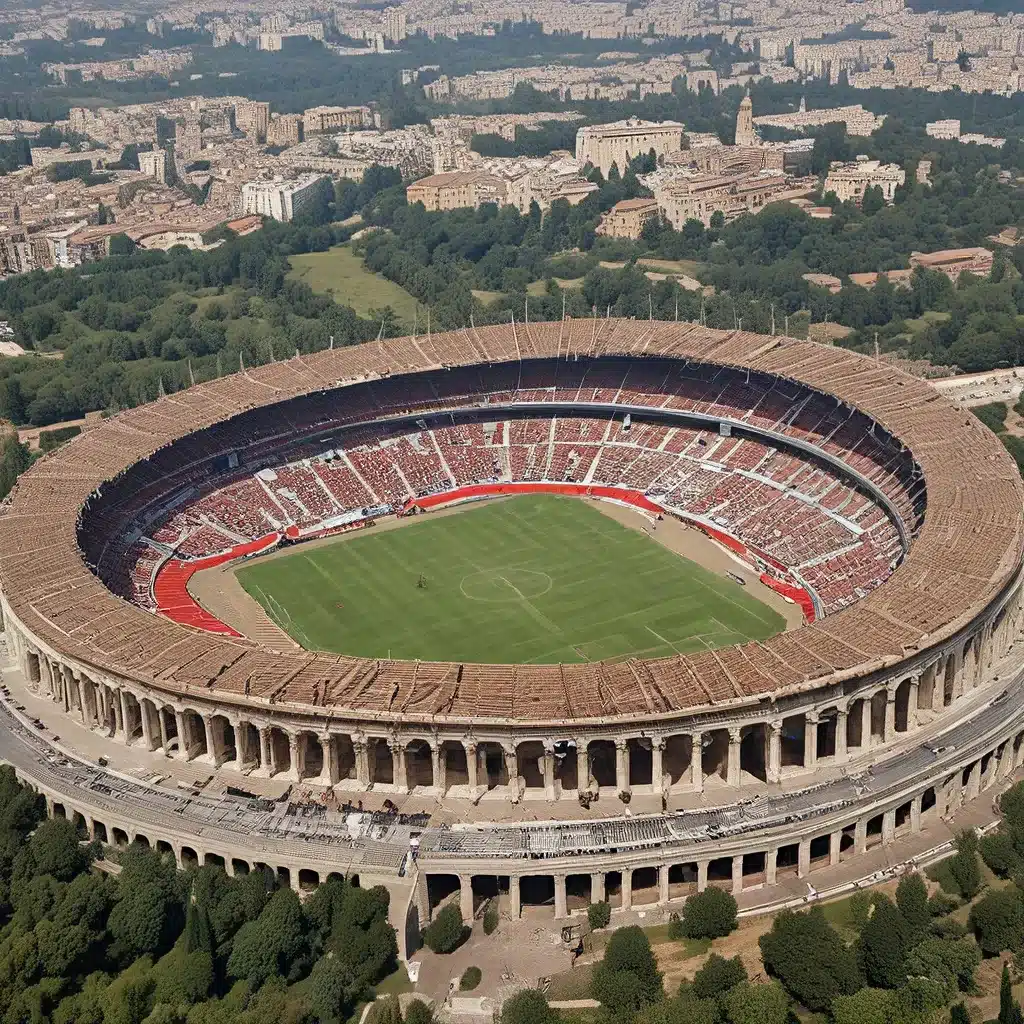
The Storied History of Stadio Olimpico
Stadio Olimpico, located in the heart of Rome, Italy, is a legendary landmark that has witnessed countless memorable sporting events over the decades. With a rich history dating back to its opening in 1937, this iconic stadium has become synonymous with Italian football and the passion of its fans. Its grandeur and architectural design make it a fascinating destination for both sports enthusiasts and tourists alike.
In this comprehensive article, we will delve into the 14 astounding facts about Stadio Olimpico that highlight its significance, key features, and memorable moments. From its capacity to host international matches to its unique dual-purpose design, Stadio Olimpico has cemented its place as one of the most revered sports arenas in the world.
Origins and Early Years
Stadio Olimpico was originally built to serve as the centerpiece for the planned 1944 Olympic Games, which were canceled due to World War II. However, the stadium went on to play a significant role in international sporting events post-war, becoming a symbol of the country’s resilience and athletic prowess.
With a capacity of 70,634, Stadio Olimpico is one of the largest stadiums in Italy and serves as the home ground for both AS Roma and SS Lazio, two of the country’s top football clubs. This iconic stadium has been the venue for four prestigious UEFA Champions League finals, making it one of the most sought-after locations for European football’s biggest event.
The 1990 FIFA World Cup
In 1990, Stadio Olimpico was chosen as the stage for the FIFA World Cup final, where West Germany and Argentina battled it out for the championship. This event added yet another remarkable moment to the stadium’s illustrious history, cementing its status as a global sporting venue.
The stadium’s unique architectural design sets it apart from other stadiums, with its elliptical shape creating a visually striking and memorable structure. Over the years, Stadio Olimpico has undergone several upgrades and renovations to improve the fan experience and maintain its status as a world-class sporting venue.
Beyond Football: A Diverse Venue
Stadio Olimpico’s significance extends beyond just football. The stadium has welcomed renowned musicians and bands, including U2, Bruce Springsteen, and the Rolling Stones, who have held unforgettable concerts within its walls. This multi-purpose nature of the stadium has allowed it to captivate a wide range of audiences, from sports enthusiasts to music lovers.
During the 1960 Rome Olympics, Stadio Olimpico proudly hosted the grand opening and closing ceremonies, leaving a lasting legacy as an Olympic symbol. The stadium’s rich football history has also earned it the reputation as the spiritual home of Italian football, with the national team frequently choosing this iconic venue for their important international matches.
A Diverse Host of Events
In addition to football and athletics, Stadio Olimpico has also hosted important rugby matches, including the Six Nations Championship and European Rugby Champions Cup finals. This versatility has cemented the stadium’s status as a truly remarkable sports venue, capable of hosting a wide range of events and competitions.
With its stunning architecture, rich history, and electrifying atmosphere, Stadio Olimpico consistently ranks high among the world’s most remarkable sports venues. As one of Rome’s most cherished landmarks, the stadium continues to captivate sports and music fans alike, ensuring its place in history as an unforgettable and inspiring destination.
Exploring the Stadium
Whether you’re a football enthusiast, a music lover, or simply a curious traveler, Stadio Olimpico is a must-visit destination that offers a unique and unforgettable experience. The stadium’s guided tours allow visitors to explore the various areas of the stadium and learn about its rich history, providing a deeper appreciation for this architectural marvel and its significance in the world of sports.
Easily accessible from the city center, Stadio Olimpico is well-connected to Rome’s public transportation network, making it a convenient stop for anyone exploring the city. In addition to the stadium, visitors can also explore the nearby Foro Italico and the iconic Vatican City, creating a comprehensive cultural and historical experience.
Conclusion: A Lasting Legacy
Stadio Olimpico is an architectural marvel and a true icon in the world of sports. Its rich history, impressive capacity, and stunning design make it a must-visit landmark for any sports enthusiast or architecture lover. The stadium’s significant role in hosting major sporting events, including the FIFA World Cup and the Olympic Games, only further adds to its allure.
Whether you’re attending a football match, soaking in the atmosphere during a concert, or simply exploring the fascinating history of the stadium, Stadio Olimpico is sure to leave you in awe. Its grandeur, combined with the electrifying energy of the crowd, creates an unforgettable experience that celebrates the enduring legacy of this iconic Italian landmark.
So the next time you find yourself in Rome, be sure to visit Stadio Olimpico. Immerse yourself in its incredible history, marvel at its impressive architecture, and revel in the thrill of being in a place where sporting legends have made history. Discover the grandeur and significance of this remarkable stadium for yourself.

